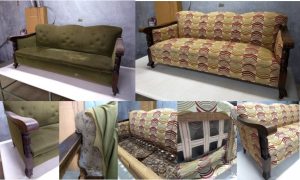Tessa Vintage Furniture

What is Tessa Furniture?
Tessa Furniture is an iconic name in Australian furniture manufacturing being a prolific name during the heydays of the local furniture industry. We know re-furbished mid-century modernist furniture with a Scandinavian influence is a niche market. However the interest not only resides with those who have been fortunate to have witnessed this period of design history. Some discerning members of the younger generations are purchasing or inheriting or purchasing second hand Tessa furniture and having it restored.
Why is Tessa Furniture So Popular?
As per the above photographs Tessa lounges are extremely well designed and soundly constructed. This Tessa lounge suite was originally purchased in 1972. When the Tasmanian Blackwood timber was sanded and re-polished and new webbing and cushioning were re-upholstered – it looks amazing!
Tessa Furniture History
Tessa originally was known as Twen commencing operation in 1968. It then changed its name to Tessa in 1970. Tessa was formed by Fred Lowen, his brother Howard Lindsey and design technician Sigi Danielzik. Fred however commenced furniture manufacturing with Ernest Rodeck in the mid 1950’s having formed FLER which was sold in 1967. Tessa expanded operations during the 1970’s to become a national operation with international links.




